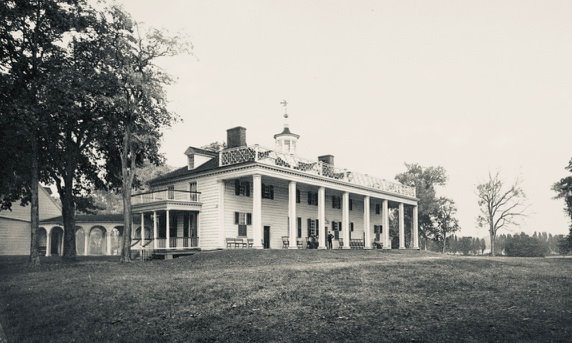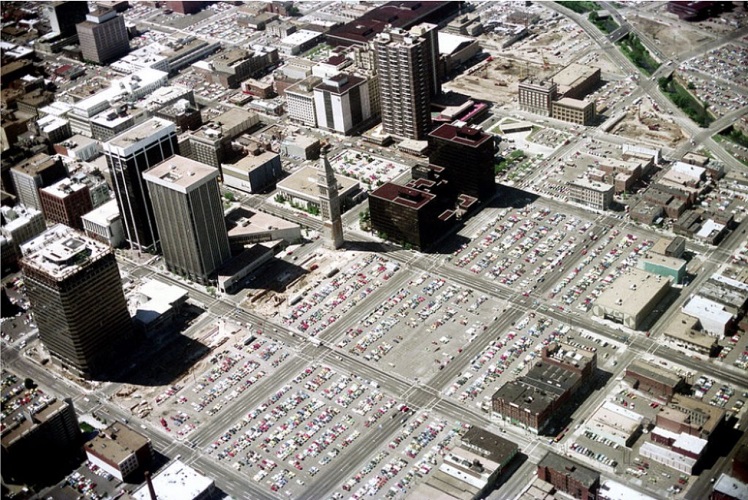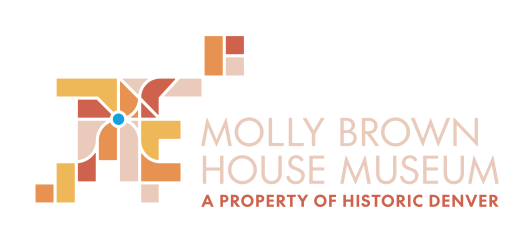THE HISTORY BEHIND HISTORIC DENVER

Early Aerial of Denver, courtesy of Denver Public Library
“A people’s memory is called history; and as a man without a memory, so a people without a history cannot grow wiser, better”.
– Isaac Leib Peretz (Polish Author & Playwright)
What exactly is historic preservation? In these polarizing times, the term has almost taken on an emotionally charged connotation. To some it means preserving the physical cultural heritage of our collective past, to others it means an impediment to progress. This is a debate that has occurred in countless meetings between property owners, land developers, preservationists, and city council members over the last several decades across the country. The state of Colorado, and the City & County of Denver in particular, have some of the most robust preservation laws, ordinances, programs, and regulations in the country. It wasn’t always this way, however, as several battle scars over lost historic resources remain throughout our community. Think of the sea of parking lots which used to cover massive amounts of Denver’s central business district; the result of misguided and unbridled urban renewal ordinances. So, in order to better answer the question of what historic preservation really is, perhaps we need to look back on how it all began.

The American ideal of moving forward as a measure of progress has been in the collective unconscious of our national culture for nearly 200 years. It began with writer John O’Sullivan and his idea of “Manifest Destiny,” which inspired a massive wave of settlement that pushed west into the frontier and all the way to the Pacific Coast. With this flurry of activity, there was little consideration for the significant historic resources that were left behind. Since as far back as 1791, with the formation of the first historical society in Massachusetts, the historic preservation movement has primarily been led at the local level, formed by the grassroots efforts of prominent citizens (usually women), in order to save a particular building or place in their community. Believe it or not, Independence Hall in Philadelphia, an iconic American landmark, was saved by early preservationists from plans for demolition in 1816. It wasn’t until the early 20th century, however, when Congress passed the Antiquities Act of 1906. A growing interest in conservation was a direct response to the devastating effects of industrialization and the discovery of archaeological sites in the American southwest. This eventually led to the formation of the National Parks Service, in 1916.
The movement began with saving the mansions of famous people, like Jefferson’s Monticello and Washington’s Mount Vernon. Then it led to an appreciation for and a desire to preserve places with a particular architectural aesthetic that captured the spirit of an idealized past, like Colonial Williamsburg. It wasn’t until the 1950s and early 1960s, however, before the government finally passed the legislation that would become the foundation for the historic preservation movement we know today. During the mid-twentieth-century, cities across the U.S. found themselves under the siege of large-scale urban renewal and highway projects. Though their goal may have been to improve the lives of everyday citizens, many of these projects of so-called progress came at the expense of older, established, minority and lower socioeconomic neighborhoods. The National Historic Preservation Act (NHPA) of 1966 not only created a program focused on preserving historic properties on a national level, it also led to the creation of the National Register of Historic Places, State Historic Preservation Offices, and the Section 106 review process (essentially federal agencies must assess the impacts their actions may have on historic resources). Though the act didn’t specifically prevent the damage or destruction of nationally recognized buildings on the register, its other important provisions included much needed financial resources, likes grants, loans, and tax incentives. As the country approached its bicentennial, there was a renewed focus, on a community level, to protect our historic resources.

1344 and 1340 Pennsylvania, Denver, CO
In the 1960s, Denver’s Capitol Hill neighborhood was going through an especially rough time, with entire blocks of historic homes falling way to the wrecking ball. Not even homes designed by well-known local architects were being spared. 1344 Pennsylvania Street, for example, was an impressive stone edifice designed by the renowned Denver architect, William Lang, in 1886. Lang’s notoriety wasn’t enough to save the beautiful Queen Anne style mansion and the sister house that he had also designed right next door, to the south, could very well have had a similar fate. 1340 Pennsylvania Street was an address made famous by the remarkable woman who had once lived there, Margaret Tobin Brown – or as she’s commonly known, the Unsinkable “Molly” Brown, the famed Titanic survivor. Unfortunately, there were no local protections in place at that time to ensure the preservation of Mrs. Brown’s former home. Fortunately, however, in response to the demolition of several other iconic Denver buildings, a group of citizens banded together in 1970 to try put a stop to it all, starting with 1340 Pennsylvania Street. On December 11th, 1970, the group officially incorporated as Historic Denver, Inc.

David H. Moffatt Mansion
With overwhelming community support, Historic Denver Inc. raised enough funds to purchase 1340 Pennsylvania Street, christening it the “Molly Brown House Museum,” which officially opened its doors in 1971. By February of 1972, the “House of Lions” was added to the National Register of Historic Places, making it among the first to receive such a designation in the state of Colorado. Over the next decade, there were losses, like the opulent 42-room Moffat Mansion, which used to sit on the northeast corner at 8th and Grant Street – resulting in widespread media attention. There were also wins, like the restoration of the Tramway Cable Building, designed by William E. and Arthur A. Fisher, which now operates as leased office and restaurant space. Then Historic Denver raised funds to begin work on the 9th Street Historic Park, in what was left of Denver’s Auraria neighborhood – which had been decimated by urban renewal. Preserving the legacy of one of the city’s earliest neighborhoods, once abundant in some of the oldest structures in Denver, with a rich and remarkably diverse cultural history, now sits one block lined on both sides of the street with 14 Victorian structures, built between 1872 to 1905. This historic district, which includes a total of 33 contributing buildings on the Auraria Higher Education Campus, was listed on the National Register of Historic Places in 1973.

Montclair School, courtesy of Denver Public Library
During the remaining years of the 1970s, Historic Denver began using easements for historic preservation, specifically utilizing a façade easement on the Richthofen Castle, built in 1887 by Baron Walter Von Richthofen (uncle to the infamous Red Baron of WWI). Façade easements ensured the ongoing protection and maintenance of the exteriors of the historic buildings in perpetuity. Another façade easement was put in place at the Croke-Patterson-Campbell Mansion, which is a rare representation of the chateau style in Denver, built in 1890. Two additional preservation wins for Historic Denver during that decade included finding preservation-minded buyers for the Montclair School building, built in 1891 on the northwest corner of 13th and Quebec Street, and the Sheedy Mansion, built in 1892 on the northwest corner of 11th and Grant Street. With each new local historic designation, citizens living in older neighborhoods throughout the city were inspired to begin forming their own historic districts – forever changing the future of Denver’s historic resources.

Paramount Theater, courtesy of Denver Public Library
This new age of emerging preservation enlightenment during the 1980s still faced the constant threat of urban renewal and redevelopment plans throughout Denver. During this era, there also began a growing fear among some in the community, regarding concerns of oversight and influence by preservationists, that it would prevent change. Despite this, Historic Denver pushed on and was even awarded money by the Heritage Conservation and Recreation Service of the Department of the Interior, to begin a major restoration project in the Curtis Park neighborhood. The Historic Paramount Foundation was formed by Historic Denver in order to purchase, preserve, and rehabilitate the Temple H. Buell designed Paramount Theater. Historic Denver introduced new legislation allowing the use of transfer of unused development rights to save the 1889 Navarre, which now operates as the American Museum of Western Art. The rest of the decade saw the preservation of Dr. Justina Ford’s former home, built in 1890 (now the Black American West Museum), which was moved from its original location to prevent demolition; the restoration of the Mayan Theater; encouraging the Colorado Convention Center to spare the David Dryden designed Evans School at 1115 Acoma, built in 1904; and most ambitious of all, the designation of the Lower Downtown Historic District, which includes 180 buildings over 22 blocks.

Mrs. Crawford Hill in a carriage leaving her home, courtesy of Denver Public Library.
During the 1990s, Historic Denver was involved in 4 major preservation projects in the city. The first was Theodore Boal designed, French Renaissance masterpiece that is the Crawford Hill Mansion, built in 1906, at 9th and Sherman Street. It was commissioned by the self-appointed queen of Denver high society of that era, Mrs. Louise Sneed Hill. The palatial home was the backdrop for many parties hosted by Mrs. Hill, especially for her elite group, the “Sacred Thirty-Six.” The second was the student outreach initiative in partnership with the Colorado Historical Society and the Denver Public Schools. Using the help of DPS students, historic school buildings were studied and evaluated for preservation and reuse, eventually winning a national preservation award for the program. The third notable project was the beginning of the restoration of the Ferril House, a beautiful Queen Anne, built in 1889 and located at 2123 Downing Street. Lastly, Historic Denver was instrumental in securing a grant from the State Historical Fund for the restoration of the Marean & Norton designed Chamber of Commerce building, built in 1910. This beautiful neoclassical building was designed with over 400 lights on its façade. The restoration work included removing pink panels that were added in the 1950s, revealing the granite columns and terracotta details that were faithfully refurbished.

Hangar 61, courtesy of the Denver Post 06.15.2010.
The arrival of the 2000s saw new challenges for Historic Denver, as the population boom put pressures on older neighborhoods to look for ways to densify. Real estate developers, trying to get the biggest bang for their buck, didn’t always incorporate the surrounding neighborhood context into their plans. This was the case when a plan was proposed to erect a square, 40-foot-tall, four story building (which didn’t relate to the surrounding buildings) amongst the beautiful Victorian homes on Humboldt Street. Fortunately, an eight-block moratorium and historic overlay district were imposed by the Denver City Council, stopping the project and adding additional restrictions to the zoning to preserve the historic context of the neighborhood. During this era, the Sacred Landmarks program was established, which was used to help restore historic churches throughout the city. Stapleton’s Hangar 61, a classic example of aviation architecture of the 1950s, was saved from demolition and designated a Denver landmark. The National Trust for Historic Preservation awarded Historic Denver with a Partners in the Field grant, which provided funding for direct technical assistance to owners of historic homes, as well as conducting educational workshops which focused on how to repair wooden windows, increasing energy efficiency, and general exterior maintenance. Lastly, Historic Denver received a federal grant from Preserve America which funded the launch of Denver Story Trek, a comprehensive interactive tourism program.

Downtown Denver after urban renewal, courtesy of Nick DeWolf Foundation.
Over the last 50 years, Historic Denver, Inc. has evolved from a grassroots movement to save a Capitol Hill mansion of unsinkable fame, to helping preserve an entire block of historic buildings, helping create historic districts, engaging in educational campaigns to further preservation awareness, championing new preservation incentives like façade easements, helping preserve neighborhood character and context, offering resources to historic home owners, giving educational tours of historic places, and finally becoming the trusted advocate to fight for the protection of the city’s most beloved historic buildings. The mission is far from over, however, as the shifting sands of politics is constantly creating uncertainty about the legislative ground gained by the field of historic preservation. The recent global economic impacts of the Coronavirus pandemic have also raised new questions about what historic preservation will look like going forward. So, what exactly is historic preservation? Sure, it involves the advocacy, preservation, rehabilitation and adaptive reuse of historic places, but it’s also so much more. It’s an ideal we should all strive to share as a society to ensure the responsible stewardship of our historic resources, so that they may exist in perpetuity, as physical reminders of our collective past. It’s these physical reminders that will help us continue to grow wiser and better as a society.
By: Jay B. Homstad, Museum Specialist
